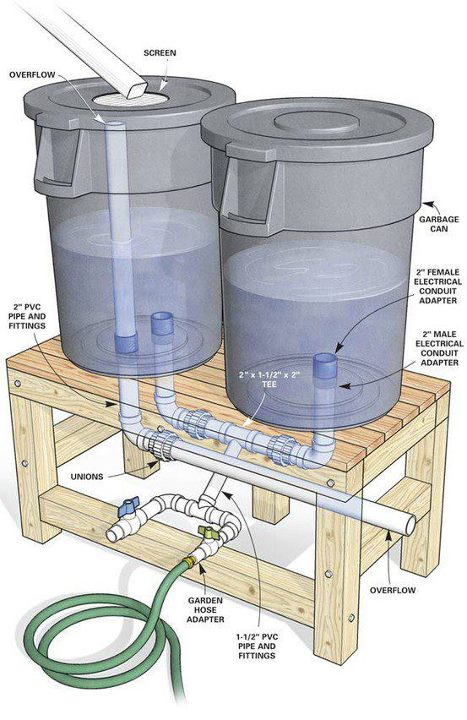When you’re considering rainwater harvesting, it’s essential to grasp the fundamentals of design, implementation, and maintenance.
You’ll need to evaluate factors like local rainfall patterns and your roof’s drainage capabilities to create an efficient system. Choosing the right type of storage, whether a simple rain barrel or a larger cistern, can impact both usability and maintenance.
But what happens once you’ve set everything up? Understanding the ongoing care required to keep your system functioning optimally is just as crucial. Let’s explore what that entails and why it matters.
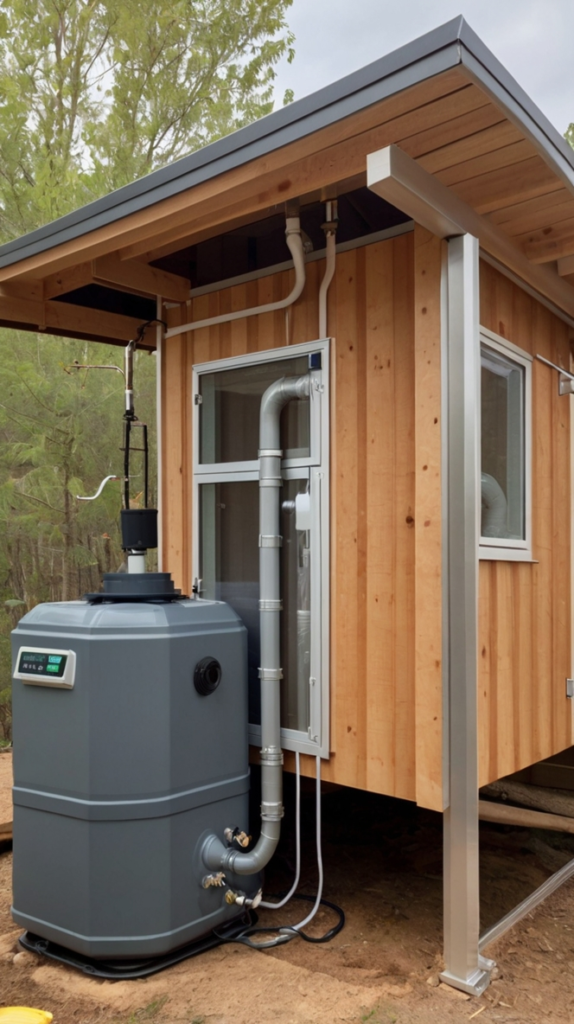
Benefits of Rainwater Harvesting
Rainwater harvesting offers a wealth of benefits that can transform how you manage water in your home. By collecting and utilizing rainwater, you can significantly reduce your water bills, using this free water source for irrigation and non-potable uses like flushing toilets.
Unlike municipal water, collected rainwater is typically non-chlorinated and free from harsh chemicals, making it healthier for your plants and garden.
Implementing a rainwater harvesting system can capture significant volumes of water—just one inch of rain on a 1,000 square foot roof can yield around 623 gallons!
This practice also promotes environmental sustainability by reducing stormwater runoff, which helps to prevent flooding, erosion, and pollution in local waterways.
Additionally, having a reliable water source during emergencies can enhance your community’s resilience, especially when municipal supplies may be compromised due to drought or infrastructure problems.
Key Design Considerations
When designing a rainwater harvesting system, you need to consider several key factors that will determine its effectiveness.
First, define the intended use of the collected rainwater, as this influences the system design and required filtration methods. For example, potable water systems will need more rigorous filtration than those for irrigation.
Next, assess the potential water collection volume by calculating your roof area and average annual rainfall. Remember, just 1 inch of rain on a 1,000 sq. ft. roof can yield about 623 gallons. This estimation helps you size your storage tanks appropriately.
You should also evaluate local regulations to ensure your system complies with any legal requirements. This step is crucial for avoiding fines and ensuring your system’s long-term viability.
Budget constraints must also be factored in, as they can limit your options.
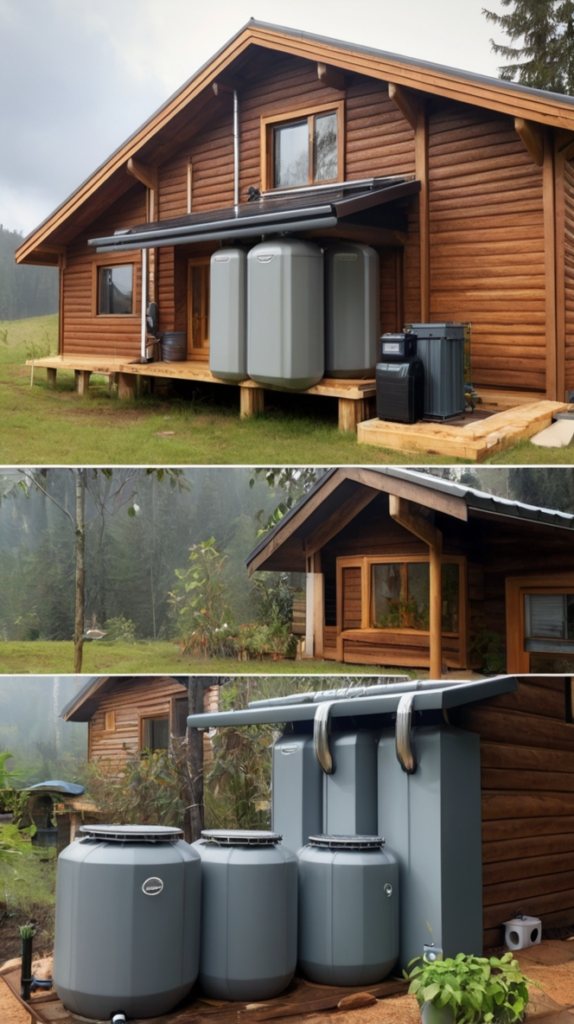
Types of Rainwater Systems
There are several types of rainwater harvesting systems to choose from, each suited to different needs and properties. For small-scale use, rain barrels are the most common option, typically holding 50 to 100 gallons and installed beneath downspouts for easy collection.
If you need greater storage, consider dry systems, which consist of larger tanks connected to gutters. These allow water to drain and dry out between rains, making them ideal for significant collection needs.
Wet systems, on the other hand, utilize underground piping to retain water continuously. While they offer a hidden aesthetic, be mindful of maintenance, as stagnant water can lead to issues like mosquito breeding.
For even larger needs, cisterns vary from 200 to 10,000 gallons, serving both irrigation and potable water after treatment.
Lastly, rain gardens capture and filter runoff through native plantings, providing an eco-friendly option. They not only manage stormwater effectively but also enhance local ecosystems.

Collecting Rainwater Effectively
To collect rainwater effectively, start by assessing your roof size and local rainfall patterns. Understanding that 1 inch of rain on a 1,000 square foot roof can yield approximately 623 gallons of water is crucial for planning.
If you have a smaller setup, consider installing rain barrels, which typically hold between 50 to 100 gallons. Position these barrels directly beneath downspouts for efficient collection.
To ensure you’re gathering clean water, use a first-flush diverter. This device helps prevent the contaminated initial runoff from entering your storage tank, keeping your collected rainwater cleaner.
Regular maintenance is key; clean your gutters and check filters routinely to maximize system efficiency and prevent debris buildup that can compromise water quality.
Additionally, consider implementing a water level indicator in your storage tank. This tool helps you monitor usage and maintain optimal water levels for irrigation or other non-potable applications.
Storage Solutions
Choosing the right storage solution for rainwater can significantly impact your system’s efficiency and utility. You have options ranging from simple rain barrels with a capacity of 50-100 gallons to larger cisterns that can hold between 200 to 10,000 gallons, depending on your water collection needs.
Above-ground tanks are generally easier to install and maintain, making them a popular choice. They’re lightweight and resistant to corrosion, especially when made of plastic.
When selecting a storage vessel, consider the material; fiberglass or concrete options can be more durable but may come at a higher cost. Regular maintenance is crucial to ensure optimal performance.
Check for debris, clean screens, and make sure your overflow devices work properly to prevent contamination and maximize water quality.
Integrating an auto-fill system can also enhance your setup. This feature helps maintain minimum water levels automatically, ensuring you have a consistent water supply without needing manual intervention.
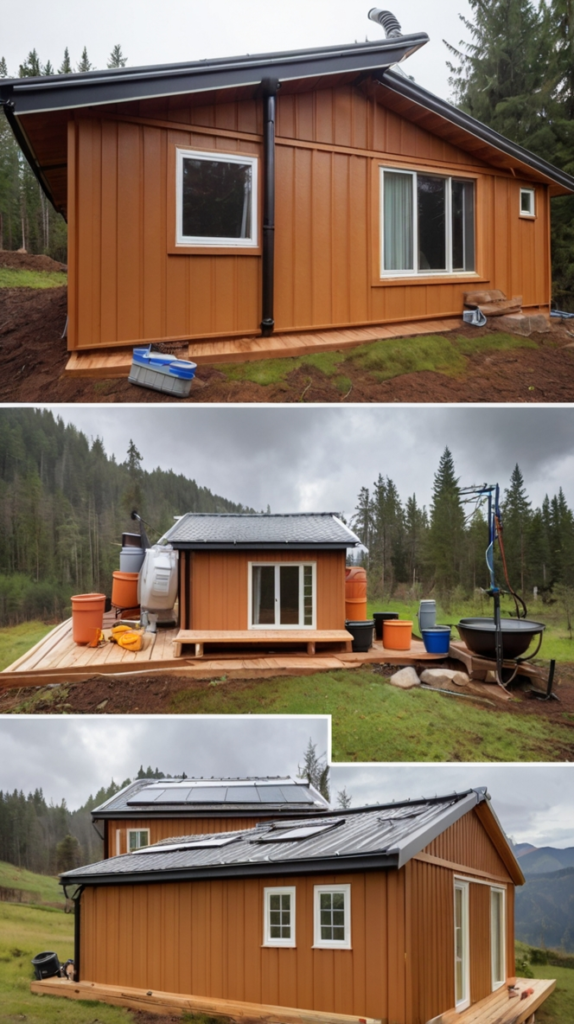
Filtration and Treatment
Effective filtration and treatment are essential for ensuring the safety and quality of harvested rainwater. Start with a pre-filter system to remove larger debris and contaminants before the water enters your storage tank. This initial step significantly improves water quality and reduces the frequency of tank cleaning.
Advanced filtration techniques, like reverse osmosis and UV purification, can further enhance purification by eliminating pathogens and chemical pollutants, making the water safe for drinking.
Regular maintenance of your filtration system is crucial. Clean screens and filters periodically to prevent algae growth and ensure optimal water flow. Consider using a WISY pre-filter system, which captures particles as small as 0.011 inches, providing superior filtration and keeping your maintenance efforts manageable.
Don’t forget to test your harvested rainwater periodically. Roof materials and airborne pollutants can introduce harmful contaminants, so identifying these issues early helps you maintain safe water quality.
Installation Process
The installation process for a rainwater harvesting system starts with a thorough site assessment, which helps you determine the best design based on your roof area, local rainfall patterns, and how you plan to use the collected water.
Once you have this information, you can choose among rainwater collection systems like rain barrels for small-scale use or larger dry and wet systems for extensive storage.
Next, you’ll need to properly place gutters and downspouts to efficiently direct rainwater into your storage tanks or barrels.
Make sure they’re positioned to minimize debris entry while maximizing water flow. This step is crucial for the system’s overall efficiency.
Additionally, incorporating filtration systems, such as first-flush diverters and pre-filters, is vital to prevent contaminants from entering storage tanks.
These systems help maintain water quality and ensure that the collected rainwater is safe for your intended use.

Maintenance Best Practices
Maintaining your rainwater harvesting system is essential for ensuring clean and efficient water collection. Start by regularly cleaning the gutters and downspouts to prevent debris buildup, which can compromise the water quality.
Inspect and replace filters every 3-6 months to maintain effective debris removal and keep your water clean.
Don’t forget to check your storage tank periodically for signs of algae growth or sediment buildup. Draining and cleaning the tank at least once a year will promote optimal performance.
Additionally, ensure that your first-flush diverter is functioning properly to prevent contaminated water from entering the storage tank, especially after dry spells.
Monitoring the water level and conditions in the tank is crucial, so use a water level indicator to keep track. This helps ensure your system operates efficiently and prevents overflow during heavy rainfall events.
Legal and Regulatory Aspects
Navigating the legal and regulatory landscape of rainwater harvesting can seem daunting, but it’s crucial for anyone looking to implement these systems. The legal aspects of rainwater harvesting vary significantly by state and municipality. Some regions impose strict regulations on the amount of rainwater you can collect and store, which could affect your system’s design and functionality.
In many jurisdictions, using harvested rainwater for drinking is often prohibited unless you meet specific treatment standards. This usually requires additional permitting, so it’s essential to know what’s needed in your area. For instance, states like Texas offer incentives, such as sales tax exemptions for purchasing rainwater collection equipment, to encourage adoption.
You should also be aware that local regulations may dictate how you design and install your rainwater harvesting system. This ensures compliance with public health and environmental protection standards.
To avoid potential fines or legal issues, it’s vital to consult local laws and guidelines before you start. By understanding these regulations upfront, you can plan effectively and enjoy the benefits of your rainwater harvesting system without any legal hiccups.
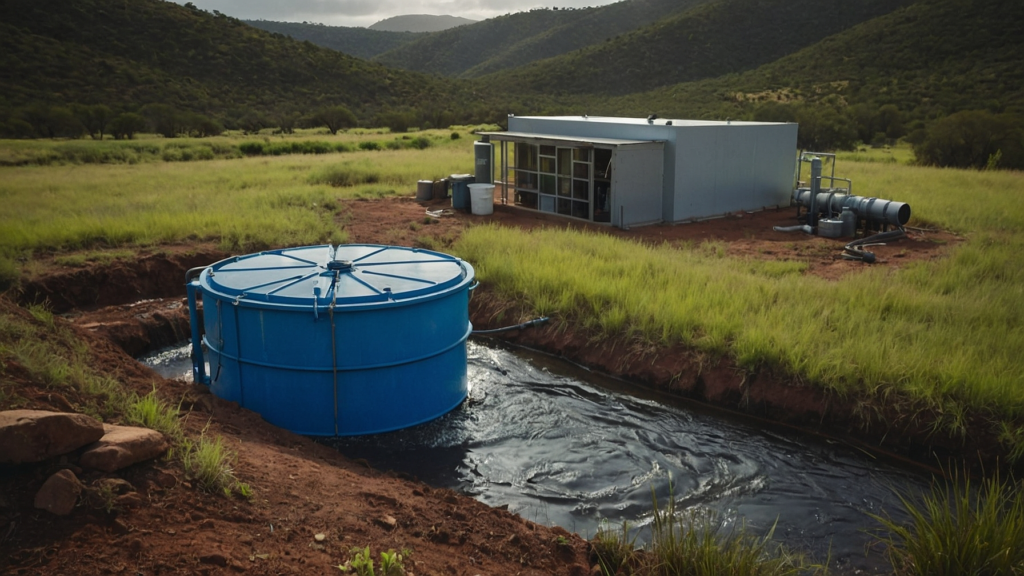
Wrapping Up
Incorporating rainwater harvesting into your life can significantly benefit both the environment and your wallet. By understanding the key design considerations, selecting the right system, and committing to regular maintenance, you can ensure a sustainable and efficient water source.
Plus, staying informed about local regulations will keep you compliant and safe. Embrace this eco-friendly practice, and you’ll not only conserve water but also contribute to a greener future for everyone. Start your rainwater harvesting journey today!
